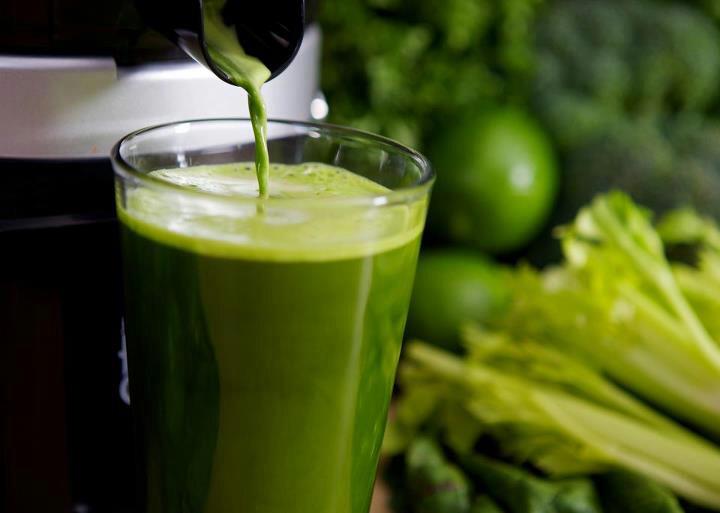The healing power of the sun has been a constant factor in human health and evolution. Each second the sun transforms four million tons of itself into radiant light energy, very much like a benevolent steady giver offering up itself unconditionally. The sun is the source behind all life’s processes on the planet. How could our collective and individual wellbeing not be tied to the light given freely by the sun?

Vitamin D deficiency is called Hypovitaminosis D and can result from an inadequate nutritional intake of Vitamin D paired with inadequate sunlight exposure, disorders that limit Vitamin D absorption, or conditions that impair the conversion of Vitamin D.
The bones of the human skeleton are made of living tissue which changes constantly as new cells are added and old ones are removed. Vitamin D maintains the correct balance of calcium and phosphorous necessary for the constant process of bone formation and remodelling. Most of the calcium in the body is stored in the skeleton with a small amount circulating in the bloodstream.
Calcium is added and subtracted to and from bone and blood in a continuous process which can become less effective as humans age. As humans grow older the ability to utilize calcium can weaken and it then becomes increasingly difficult for calcium absorption to keep up with calcium loss. Bones tend to become thinner and weaker as bone mass declines. When Vitamin D levels are low, the body cannot absorb sufficient calcium to stay healthy, no matter how much dietary calcium is taken in.

Calcium is an alkalizing mineral required to neutralize the inner body acidity created by diets high in acid forming foods like alcohol, cooked meat, refined sugar, refined fats, carbonated sodas, refined grains and processed dairy. A diet featuring these foods on a regular basis places great demands on calcium withdraw from the bones and blood.
Hypovitaminosis D has been shown to play a role in almost every major contemporary disease and associated with a 26% increased rate of all-cause mortality. This includes osteoporosis and osteopenia, 17 varieties of cancer (including breast, prostate, ovarian, and colon), cardiovascular and heart disease, high blood pressure, obesity and weight gain, metabolic syndrome and type 2 diabetes, autoimmune diseases, multiple sclerosis, rheumatoid arthritis, infectious diseases, osteoarthritis, bursitis, gout, infertility, PMS, Parkinson’s disease, depression, Seasonal Affective Disorder, insomnia, Alzheimer’s disease, chronic fatigue syndrome, fibromyalgia, chronic pain, periodontal disease, dental cavities and psoriasis.
Hypovitaminosis D is aligned with many serious and all too common modern diseases. Too much sunlight exposure can directly and adversely affect skin health. However according to researchers J. Herring and S. Ellison in The Skin Cancer Breakthrough “Since we’ve been avoiding the sun over the last 30 years, the death rate from skin cancer has risen 400%. In fact, skin cancer was a rare event before 1930 when most people worked outdoors and ignored the “risk” from the sun. Now it’s the most common cancer. And since our grandparent’s generation, the rate of melanoma “ the deadly form of skin cancer“ is up 1,800%.”

There are actually three kinds of skin cancer: Basal cell carcinoma (BCC), squamous cell carcinoma (SCC) and melanoma. Cumulative sun exposure is linked to BCC and SCC. But with early detection and treatment, these are rarely fatal. Malignant melanoma is the deadly form of skin cancer and actually has an inverse relationship to sunshine. Melanoma may be triggered by several episodes of severe sunburn.
Melanomas grow and spread through the body very quickly and, unless they are caught early, can be very difficult to treat. A third of all melanomas start in a pre-existing mole and the greater the number of moles, the higher the risk. People who have difficulty tanning are at the highest risk regardless of whether they have a history of sunburn or not. Melanoma is primarily a cancer of the skin, but can develop in the eye, rectum, vulva, vagina, mouth, respiratory tract, gastrointestinal tract and bladder.
There is evidence that the risk of developing malignant melanoma can be influenced by non-solar factors such as diet, changes in hormonal status, viruses, drugs, traumas to the skin like burns or wounds, and industrial chemical exposure in addition to short intense bursts of sunlight for which indoor-dominant bodies are ill-prepared to withstand. Melanomas can appear on the palms, the soles of the feet, and areas usually covered by clothing such as the legs and back. They seldom occur in outdoor workers and there is evidence that regular moderate sunbathing actually reduces the risk of developing this form of cancer.
If sunshine were deadly, people who live in sunny climates would suffer the most deaths from skin cancer, but the opposite is true. Those who live in cold, damp climates with little sunshine – like London or Minnesota – have higher rates than those who live in sun-drenched areas like Arizona, New Mexico and Florida.

Human skin is designed to use antioxidants (like Vitamins A, C and E) to neutralize solar radiation as well as is designed to increase melanin in the skin as part of its natural protection. Melanin, the brown pigment made by the melanocytes in the basal layer of the skin, is the body’s own built-in protective defense, as it effectively absorbs the energy of the UV radiation like mini solar panels in the skin.
The use of sunscreens stops the body’s natural process of creating more melanin to protect the cells. Sunscreen use also prevents built-in red warning light “ painful sunburn on the skin “ from signaling the individual to get out of the sun. Staying in the sun 10, 20, 30, or 50 times longer than normal because a sunscreen chemical is preventing the sunburn, consumes the skin’s store of antioxidants, leaving the skin open to damage from the radiation.
Dr. Frank Lipman, a contemporary integrative doctor, summarizes that “as a general rule, old people need more Vitamin D in their systems than young people, big people need more that little people, fat people need more than skinny people, northern people need more than southern people, dark-skinned people need more than fair skinned people, winter people need more than summer people, sunblock lovers need more than sunblock haters, sun-phobes need more than sun worshipers, and ill people may need more than well people.”

The body makes better use of Vitamin D derived from the sun than it does from Vitamin D in the diet and Vitamin D supplements can become toxic at high levels. There have been calls for Vitamin D to be removed from fortified foods because of the risks of toxicity, particularly in children. A adult daily dose of about 50,000 IU can cause hypercalcemia, or abnormally high levels of calcium in the blood. The symptoms include nausea, vomiting, excessive urination, extreme fatigue, depression and muscle weakness.
Regular high dose of Vitamin D supplementation can result in abnormal calcium deposits in blood vessel walls, the kidneys and other organs, coma and even death. Vitamin D supplements can trigger asthma in aspirin-sensitive patients and should be taken with caution by patients of anticoagulants. It can also cause a rise of blood glucose in insulin-dependent patients. Excessive Vitamin D intake causes magnesium deficiency in the heart, which can lead to spasm in the coronary arteries and possible heart attack. Vitamin D fortified foods such as dairy products, cereals, baby foods and juices have nearly replaced the task of educating the public about the benefits of natural sunlight.

Rather than relying on fortified foods or oral supplements, there is a great deal to be said for getting in the sun for short periods during the spring and summer. The body makes much better use of Vitamin D produced by the sun than the dietary form of Vitamin D and if a person gets enough sunlight at the right time of year to build individual stores, there is little to no need to have any dietary Vitamin D at all.
The increased use of sunscreen has indelibly changed the nature of sunbathing. The promotion of using sunscreens in epidemic proportions has led to what is being described as a worldwide pandemic of Vitamin D deficiency, so extreme that there has been a reemergence of rickets, the “17th century disease,” in some parts of the world, including America.
From 1970 to 2009, the incidence of melanoma increased by 800% among young women and 400% among young men. Dietary factors coupled with ozone depletion and increased sunscreen use has possibly created a perfect storm for increased disharmony between sun exposure benefits and sun exposure risks leading to epidemic Hypovitaminosis D.
Rather than relying on sunscreen lotions and SPF cosmetics, anyone concerned about sunlight causing premature aging may have more to gain from adopting a diet which protects against damage from the sun and from wearing a hat.
Well-nourished skin responds better to sunlight than skin that is low in minerals. Vitamins A, B, C and E in the diet, together with selenium, bio-flavonoids, beta-carotene (a precursor of Vitamin A in the body), zinc and other minerals and compounds are known to be capable of either preventing free radicals from forming, or protecting the body from damage once free radicals have formed.

If a person wants to reduce or virtually eliminate the risk of skin- and other cancers, it will be vital to radically reduce the consumption of most refined vegetable oils, as they are high in omega-6 fats. Just 100 years ago, the average American consumed less than one pound of these oils per year, and today that amount has exploded to 75 pounds per year.
Good whole food sources of carotene (Vitamin A precursor) are carrots, sweet potatoes, melons, squash, apricots, peaches, corn, bananas, pumpkin and dark green leafy vegetables. Good whole food sources of Vitamin C are oranges, strawberries, tomatoes, grapefruit and dark leafy greens. Good whole food sources of Vitamin E are whole grains, fresh vegetables and whole nuts and seeds. Vitamins obtained from whole food is preferable than oral supplementation as the risk of overdose is nearly impossible when eating intact food.
Heliotherapy, or sun therapy, is not for everyone though. Dr. Kime warns that “unless one has a proper diet, sunlight has an ill effect on the skin. This must be emphasized: sunbathing is dangerous for those who are on the standard high-fat American diet or do not get an abundance of vegetables, whole grains and fresh fruits. Those on the standard high-fat diet should stay out of the sun and protect themselves from it; but at the same time they will suffer the consequences of both the high-fat diet and the deficiency of sunlight.”
Heliotherapy should be avoided by anyone with a history of alcoholism or serious mental health issues, as well as those taking photosensitizing medications. Antihistamines, oral contraceptives, antidiabetic agents, tranquilizers, diuretics and a number of antibiotics can increase sensitivity to the sun.
Safe, healthy sunbathing requires moderation and a degree of self-knowledge. The factors that affect UV radiation exposure and research to date on the amount of sun exposure needed to maintain adequate Vitamin D levels make it difficult to provide general guidelines appropriate for every body. The best general advice is approximately 5 – 30 minutes of sun exposure between 10 AM and 3 PM at least twice a week to the face, arms, legs, or back without sunscreen usually leads to sufficient Vitamin D synthesis, but still needs to be modified based on personal skin tone, UV index, diet and serum Vitamin D levels. Individuals with limited sun access need to include good sources of Vitamin D-rich food in their diet, take an oral supplement or safely seek the artificial light of tanning beds.

{ 0 comments… add one now }
{ 3 trackbacks }